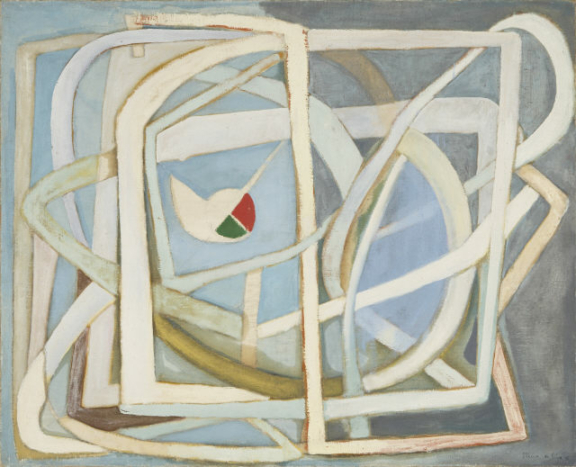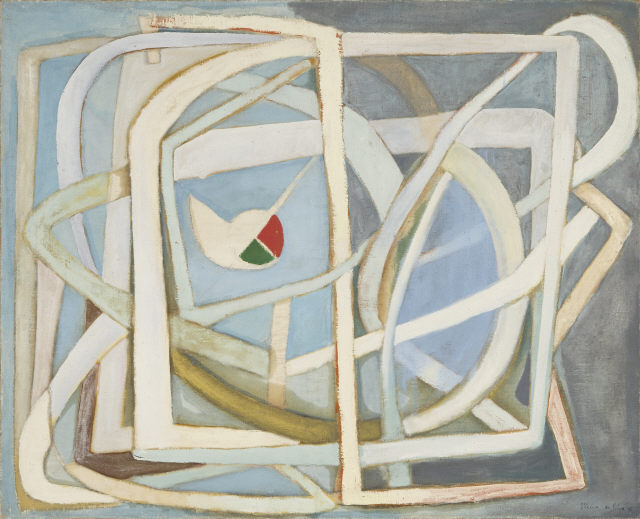The original oeuvre of Vieira da Silva, universally characterised by advances and retreats, uncertainties and experimentation, is punctuated by remarkable moments of progress. Up until 1935, Vieira da Silva used the central perspective and constructed space around a single imaginary vanishing point in noteworthy paintings featuring closed spaces. From 1936 onwards, this perspective was gradually surpassed in the series entitled Compositions. The affirmation of the plane through purely visual elements, such as lines and contours, serves to enhance the architectural nature of the compositions. Structure and pictorial space are the driving forces behind her constructive tendencies. Themes diminish in importance and become visual diagrams. The paintings in this series do not have titles, nor are they intentional Compositions, and the grid acts as a method for compartmentalising space in the two-dimensional support of the canvas.
Composition is part of a set of works that may be defined as spatial skeletons which serve to highlight the structures that define the composition, where abstraction excludes any kind of figuration. Vieira da Silva devotes her attention to the framework of the visible, and the structures are stripped bare. She is interested in the essence; the spaces are inward-looking and closed off, just as the artist is isolated from the outside world and reality. The composition is ordered around a central axis, a stabilising element which is instantly dispelled by destabilising elements. The lines, extended by contours, criss-cross and become intertwined with one another from one plane to another, creating distortions and forming a grid which destroys any perspective suggested in earlier compositions. The idea of a labyrinth (long before this spatial configuration came to be used as a title for paintings) is implicit in the lost path of the tangle of lines. Density disappears, depth is destroyed, and the canvas reclaims its function as a container. The colour, stripped of any expressive value, accentuates the purpose of the lines, which create new planes from their intersections, highlighting the architecture of the piece and the absence of volume. Pure colour is used with a view to dynamism, rather than the palette becoming plainer and more saturated. Vieira da Silva deliberately uses colour for its intrinsic relationship with painting, enabling detachment from reality and reductive essentiality, which soon became imperative to overcome and transgress.
Marina Bairrão Ruivo
May 2010

